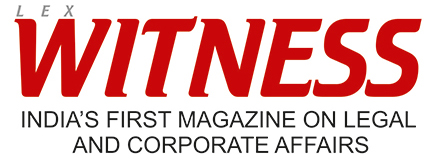
or

Click-wrap agreements, sometimes called “click-through”; “click and accept” and “web-wrap” greements are agreements formed over the Internet. There are two approaches to this, in the first one, an end-user can download a software product or solution or electronic content only after “clicking and accepting” the license terms; whereas, the second approach involves registration for an online service or purchase of tangible goods which necessitates acceptance of the terms and conditions of such an agreement. Internet users have become familiar with screens flashing legal terms and requiring the clicking of an “I accept” button, before such goods can be ordered, services procured, or information accessed. The Internet user must indicate his assent/ acceptance to be bound by the terms of the offer via express action/ conduct; typically, by the conscious and considered clicking on a button stating “I agree” or “I accept.” No paper record is generally created; nor is the signature (electronic or paper) of the Internet user required, unlike in other agreements/ contracts.
A clickwrap is an electronic contract/ agreement posted online or on a start-up screen of a software product or solution. It says something like: “By clicking ‘I agree’ below; or that you agree to the following terms.” The customer cannot access/ use the service/ software/ solution or install the same unless and until he/she accepts or agrees or consents by clicking “I agree.”
From practical perspective “Clickwraps” works efficiently and effectively without inking or requiring actual signing or putting a signature. But it has to done the right way. If you are a tech/ software/ solution/ platform/ other services provider while using a clickwrap, you need to make sure the signature is by “click” on the button which states that “I agree” or, even better; “I agree to the Terms of Service” “click” comes before payment, and is a much-preferred mode, rather than by just clicking the button which states “Next” or “Sign Up.” There needs to be an absolute certainty that, by clicking the button, the customer is executing a contract. The best clickwrap systems require that the customer take two steps to execute. Often, the customer has to scroll through the contract’s terms before arriving at the “I agree” button, and then click that button. Some systems require that the customer click twice. The first click could accept the contract’s terms; while the second takes the customer to the installation process. Though, no law requires two-step procedures, but many view two steps mode much more safer.
If your customers are companies, as opposed to individuals, consider including a representation of authority, somewhere near the “I agree” button. “THE PERSON EXECUTING THIS AGREEMENT ON CUSTOMER’S BEHALF WARRANTS THAT HE OR SHE HAS THE AUTHORITY TO BIND CUSTOMER TO THESE TERMS AND CONDITIONS.” At a minimum, put those terms at the top of the clickwrap contract itself.
Click-wrap agreements derive their name from so-called “shrink-wrap” agreements, the license agreements by which most packaged consumer software is sold today. The term “shrink-wrap” comes from the manufacturing process of “shrinking” the clear cellophane packaging around the product box. Originally, software manufacturers attempted to print the entire license text on the outside of the product box, visible through the cellophane wrapping, with a notice that by breaking the seal and opening the box, the user would become bound by the license terms. Today, a well-drafted shrink-wrap notice should contain a statement on the outside of the product packaging that software is copyrighted and that the data and its users are subject to the terms in an agreement within the box. License terms are printed in full in the user guide, licensing brochure or as part of the product’s help menu.
In the USA, the 1996 landmark case of Pro CD vs Zeidenberg affirmed the validity and enforceability of shrinkwrap agreements. The court had placed reliance on Article 2 of the Uniform Commercial Code (“UCC”) and commonlaw contract principles to hold that ProCD had restricted the manner of accepting its offer to the user’s agreeing to the license terms. Under UCC §2-204, a “contract for the sale of goods may be made in any manner sufficient to show agreement, including conduct by both parties which recognizes the existence of a contract.” Similarly, Section 19 of the Restatement (Second) of Contracts provides that “the manifestation of assent may be made wholly or partly by written or spoken words or by other action or by failure to act.” The court held that the above provisions supported the conclusion that a binding contract was created when the defendant used the software, indicating his assent to be bound by ProCD’s license terms. The court held that, “shrink-wrap licenses are enforceable unless their terms are objectionable on grounds applicable to contracts in general.” The court observed that “transactions in which the exchange of money precedes the communication of detailed terms are common” not only within the software industry, but in many service industries such as insurance, airline tickets and concert tickets.
In the case of Caspi vs The Microsoft Network2, plaintiffs sued for, among other things, breach of contract and fraud for Microsoft “rolling over” MSN membership into more expensive plans. The Appellate Division of New Jersey affirmed the Superior Court of New Jersey’s decision that the forum selection clause contained in Microsoft Network subscriber agreements was enforceable and valid. A forum selection clause in the Microsoft Network’s terms of use had mandated that all suits concerning the subscriber agreement be brought in courts located in Kings County, Washington. The court found that the parties entered into a binding contract when the end-user agreed to be bound by the terms of the Microsoft Network’s subscriber agreement. The user could not use Microsoft Network unless the user clicked the “I agree” button next to a scrollable window containing the terms of use.
There are a few key pieces of legislation that specifically outline the regulation of clickwrap agreements. The Federal Electronic Signatures in Global and National Commerce Act (“ESIGN”) [at the Federal level] was enacted on 30.06. 2000, which intended to facilitate the use of electronic signatures and other electronic records in the interstate & foreign business transitions, and inter alia, spelt the requirements, or standards, used to determine the validity & legal enforceability of electronic agreements. The Uniform Electronic Transactions Act, 1999 (“UETA”) [at the State level] was adopted by 47 states, lay out requirements for electronic signatures & electronic records. UETA expressly states that the electronic signature includes “the standard webpage click through process.”
In the case of Specht vs Netscape3 is assumed to be as the “original” clickwrap case. On the web page visited buy je users to download software, Netscape included language “Please review and agree to the terms” at the bottom of the screen, but users were not required to agree to the terms in any other way. The court determined that a customer clicking a button may not necessarily indicate an agreement to terms, if the customer was not aware of the existence of those terms, and did not enforce Netscape’s terms.
In the case of Sgouros vs TransUnion Corp4 it was observed that the TransUnion Corp encompassed their terms in a scroll wrap directly on the screen, and required users to check a box labelled “I Accept & Continue” when creating an account. The court acknowledged there was a consensus that clicking a button or checking a box is sufficient to signify acceptance of a contract, as long as the layout of the page put the users on notice of the terms. But since the notice surrounding the checkbox did not notify users of the existence of a contract, the court did not enforce TransUnion Corp’s terms.
In the case of Nguyen vs Barnes and Noble, Inc5 it was noted that the Barnes & Noble included a link to the terms on the bottom left corner of every page on their site. If a user clicked on the hyperlink to the terms, they would see the language at the very top of the terms that by visiting or doing anything on the Barnes and Noble web-site, they have accepted the “Terms of Use”. Unfortunately, Barnes & Noble included the link at the bottom of each webpage and did not otherwise call the terms out to the user or require them to take an action to explicitly assent to the terms. So, the court ruled that users were not put to reasonable notice.
The above cases underscore the significance of upfront notifying the users of terms of such usage and obtaining acceptance/ assent to such terms.
Clickwrap Agreements, where users explicitly agree to terms by clicking an “I Agree” button, are more straightforward in terms of enforceability in India. The absolute consent/ acceptance requirement in terms of the Indian Contract Act, 1872 (9 of 1872) stands satisfied by Clickwrap Agreements, which offer a direct method for users to indicate their acceptance/ agreement.
Indian courts have generally upheld the validity of Clickwrap Agreements, provided that the terms are not concealed in a way that prevents a user from accessing them and that the user is given a clear opportunity to read the terms before accepting them.
Furthermore, the Information Technology Act, 2000 (22 of 2005) [“IT Act”] grants legal recognition to electronic contracts & digital signatures, strengthens the enforceability of Clickwrap Agreements in India. Under IT Act, electronically formed contracts are recognized as valid & enforceable, provided they meet the essential criteria laid out in the Indian Contract Act, such as lawful consideration, lawful object, and free consent.
Indian courts and tribunals have demonstrated a delicate and balanced approach to the enforcement of Shrinkwrap & Clickwrap Agreements, emphasizing fairness and balancing the power to negotiate.
In Ddit (Ltd) Mumbai vs Gujarat Pipavav Port Ltd6., the Income Tax Tribunal ruled that while Shrinkwrap and Clickwrap Agreements may satisfy the formal requirements of a valid contract, they can be deemed unenforceable, if they involve unconscionable or unreasonable conditions. This decision highlights that contracts, where terms are non-negotiable and imposed by a stronger party, can be challenged, if deemed unfair.
Similarly, in LIC India vs Consumer Education and Research Centre7, the Hon’ble Supreme Court emphasized the necessity for judicial intervention in contracts with an apparent imbalance in bargaining power. This principle is particularly relevant to Shrinkwrap & Clickwrap Agreements, which are often presented on a “take-it-or-leave-it” basis. If such Agreements are found to be unfair, unreasonable, or oppressive, particularly when consumers lack meaningful choice, they could be challenged and potentially invalidated under Article 14 of the Constitution of India, which ensures equality before the law and protection against arbitrary state action.
The legitimacy of Clickwrap contracts can be seen all over the world, withcountries such as the USA, UK, Europe, and other emerging economies having statutes expressly dealing with them. As Internet world is without any physical boundaries, adaption of a common convention agreed between all the nations, at least majority of them, across the globe requiring fair an balance terms of bargain would a long way in protecting the interests of internet users, who are generally not in apposition to negotiate.
The jurisprudence is still evolving in this area and lot more initiatives need to be taken globally. The Consumer Protection Act, 2019 though provides protection to the consumers against unfair trade practices and also lays down the rights and duties of e-commerce platform; there is a need for a separate legislation which can deal with “Unfair Terms.” As a “wayforward, a separate statute on “Unfair Terms” with stringent penalties would go a long way in providing statutory protection for Clickwrap contracts and other types of contracts discussed above.
Disclaimer: Please note that the views in this article are solely of the author and not of the company.
Mugdha Phadke is currently working as Senior Officer at Wockhardt Hospitals Limited. who is a legal professional with a good experience over five years of expertise in drafting and reviewing contracts for various sectors like pharmaceutical and healthcare sector. She is a law graduate and currently doing Master of Laws (LL.M.) in Business Law from Mumbai University.

Lex Witness Bureau

Lex Witness Bureau

Lex Witness Bureau

For over 10 years, since its inception in 2009 as a monthly, Lex Witness has become India’s most credible platform for the legal luminaries to opine, comment and share their views. more...
Connect Us:


The Grand Masters - A Corporate Counsel Legal Best Practices Summit Series
www.grandmasters.in | 8 Years & Counting
The Real Estate & Construction Legal Summit
www.rcls.in | 8 Years & Counting
The Information Technology Legal Summit
www.itlegalsummit.com | 8 Years & Counting
The Banking & Finance Legal Summit
www.bfls.in | 8 Years & Counting
The Media, Advertising and Entertainment Legal Summit
www.maels.in | 8 Years & Counting
The Pharma Legal & Compliance Summit
www.plcs.co.in | 8 Years & Counting
We at Lex Witness strategically assist firms in reaching out to the relevant audience sets through various knowledge sharing initiatives. Here are some more info decks for you to know us better.
Copyright © 2020 Lex Witness - India's 1st Magazine on Legal & Corporate Affairs Rights of Admission Reserved